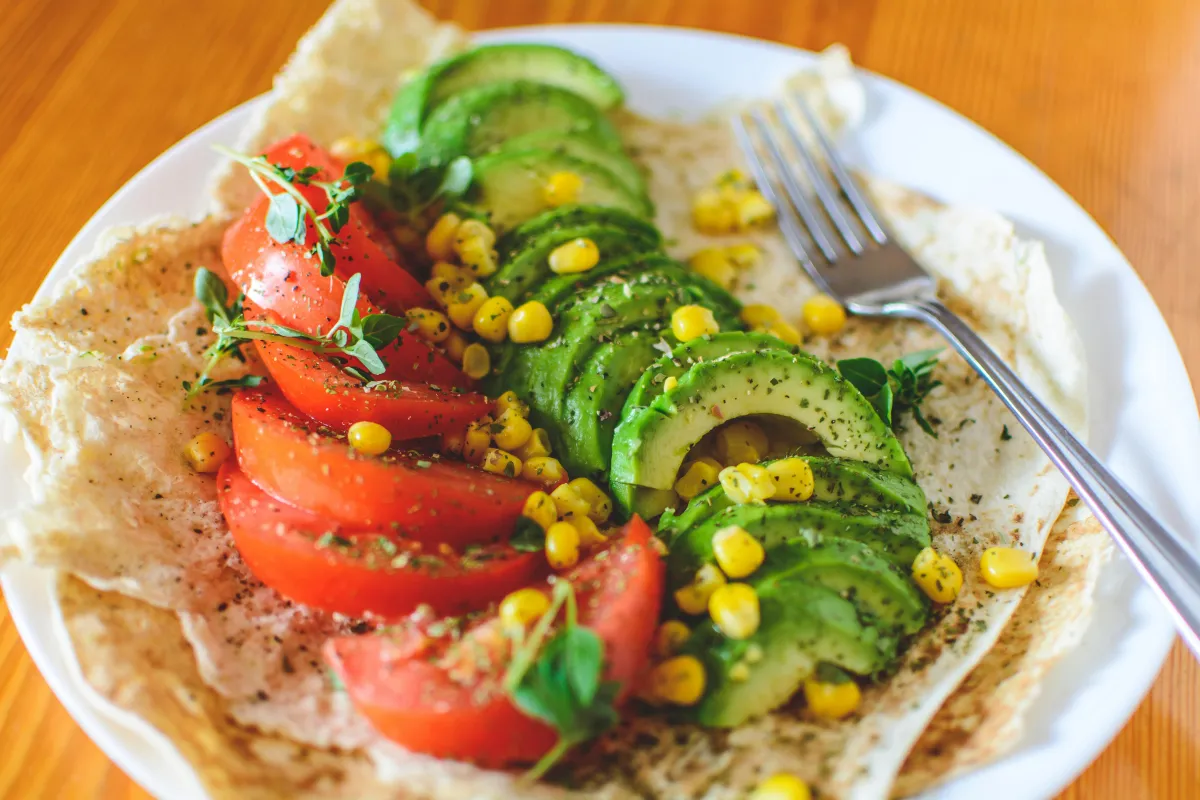OUR RECENT POSTS

The Blue Zone Diet: Eating for Longevity and Wellness
Have you ever wondered why some people seem to live longer, healthier lives? In certain regions around the world, people routinely live to 100 years or beyond, often without the chronic diseases that many of us face in the modern world. These regions, known as "Blue Zones," are home to some of the world’s longest-living people. What’s their secret? While genetics certainly play a role, much of their longevity can be attributed to their diet and lifestyle.
In this blog, we’ll explore the Blue Zone diet, a way of eating that emphasizes whole, plant-based foods and other health-promoting habits, and how incorporating these principles into your life can help promote wellness and longevity.
🌍 What Are Blue Zones?
The term “Blue Zones” refers to five specific regions where people consistently live longer, healthier lives than anywhere else in the world. These areas were identified by National Geographic Fellow Dan Buettner and his team, who studied the habits and lifestyles of centenarians (people aged 100 or older) in these regions. The five Blue Zones are:
Okinawa, Japan
Sardinia, Italy
Nicoya Peninsula, Costa Rica
Ikaria, Greece
Loma Linda, California, USA
In these regions, people not only live longer but also enjoy a high quality of life with lower rates of chronic diseases such as heart disease, cancer, and diabetes. So, what are these people eating, and how can we adopt their eating habits for better health?
🥕 The Core Principles of the Blue Zone Diet
The Blue Zone diet is based on whole, natural foods that support longevity and overall wellness. Here are the key elements of this diet:
1. Plant-Based Foods
The Blue Zone diet emphasizes a plant-based approach to eating, with a focus on vegetables, legumes, whole grains, and fruits. In fact, beans are a staple food in many of these areas. Eating a variety of colorful fruits and vegetables provides essential nutrients, antioxidants, and fiber, which are key for maintaining a healthy body.
Key foods: Leafy greens, tomatoes, sweet potatoes, beans, nuts, and whole grains like oats and quinoa.
2. Minimal Processed Foods
Processed foods, especially those high in sugar and refined grains, are virtually absent from the Blue Zone diet. These foods are linked to inflammation, obesity, and chronic diseases like diabetes and heart disease. Instead, people in Blue Zones focus on eating foods in their most natural form, providing more nutrients and fewer empty calories.
Key foods: Fresh fruits, vegetables, and minimally processed grains and legumes.
3. Moderate Portions
While portion sizes vary by region, a key principle of the Blue Zone diet is eating in moderation. The Okinawans, for example, practice the concept of "Hara Hachi Bu," which means eating until they are 80% full. This mindful approach to eating helps prevent overeating and promotes healthy weight management.
Tip: Practice mindful eating by slowing down, chewing thoroughly, and paying attention to hunger cues. Stop eating when you're satisfied, not full.
4. Healthy Fats
While Blue Zone diets are low in unhealthy fats, they include healthy fats from sources like olive oil, nuts, and avocados. These fats are rich in omega-3s, which support heart health, reduce inflammation, and improve brain function.
Key foods: Extra virgin olive oil, nuts, seeds, and avocados.
5. Limit Meat and Dairy
Meat is eaten sparingly in Blue Zones, typically only on special occasions. When meat is consumed, it’s usually in small portions and as a side dish rather than the main course. Dairy is also limited or consumed in moderation, and when it is, it’s typically fermented, such as in yogurt or cheese.
Tip: Aim to eat meat as an occasional treat and explore plant-based protein sources like beans, lentils, and tofu.
🌱 How the Blue Zone Diet Promotes Longevity
The Blue Zone diet isn’t just about eating the right foods—it's about eating in a way that supports long-term health. Here's how the diet helps promote longevity and wellness:
1. Reduces the Risk of Chronic Disease
A plant-based diet rich in antioxidants, fiber, and healthy fats can significantly reduce the risk of chronic diseases, including heart disease, diabetes, and certain cancers. The low intake of processed foods and refined sugars is another key factor in reducing inflammation and promoting overall health.
2. Supports Healthy Weight Management
Because the Blue Zone diet emphasizes whole, nutrient-dense foods with plenty of fiber, it naturally promotes healthy weight management. The focus on moderation, mindful eating, and portion control helps prevent overeating and supports sustainable, long-term weight loss.
3. Improves Gut Health
The Blue Zone diet includes a variety of high-fiber foods, such as beans, vegetables, and whole grains, which are known to promote gut health. A healthy gut is linked to improved digestion, a stronger immune system, and better mental health.
4. Boosts Mental Health
The nutrient-dense, anti-inflammatory nature of the Blue Zone diet can also have a positive impact on mental well-being. Studies show that the Mediterranean-style eating patterns common in Blue Zones, which are rich in healthy fats, may help reduce the risk of depression and cognitive decline.
🍇 Blue Zone-Inspired Meals
Here are some simple meal ideas inspired by the Blue Zone diet:
Breakfast:
Oats with Berries and Nuts – Oats are a whole grain that provide fiber and nutrients. Top with fresh berries and a handful of nuts for added antioxidants and healthy fats.
Vegetable Scramble – A mix of sautéed greens, tomatoes, and onions with a sprinkle of feta or another plant-based cheese.
Lunch:
Lentil Soup – Packed with protein, fiber, and iron, a hearty lentil soup is a perfect Blue Zone-inspired lunch. Add in some leafy greens, carrots, and celery for extra nutrients.
Salad with Beans – A salad with mixed greens, beans, olive oil, lemon, and a variety of colorful vegetables makes for a nutritious, filling meal.
Dinner:
Grilled Vegetables and Quinoa – A simple combination of grilled vegetables (like zucchini, eggplant, and bell peppers) with a side of quinoa provides a balanced, plant-based dinner.
Sardines and Sweet Potatoes – Sardines, commonly eaten in Sardinia, provide omega-3 fatty acids, while sweet potatoes offer a rich source of fiber and vitamins.
🌿 How to Incorporate the Blue Zone Diet into Your Life
You don’t have to live in a Blue Zone to benefit from the diet. Here are a few simple ways to incorporate its principles into your daily routine:
Start small: Begin by adding more plant-based meals into your week. Try a meatless Monday or switch out processed snacks for fresh fruits or nuts.
Focus on whole foods: Shop the perimeter of the grocery store where whole foods like vegetables, fruits, and whole grains are located.
Cook more at home: Preparing your own meals gives you control over what’s in your food and allows you to focus on fresh, whole ingredients.
Slow down and enjoy meals: Practice mindful eating by savoring each bite and listening to your body’s hunger cues. Avoid eating in front of screens to enhance the dining experience.
The Blue Zone diet is more than just a way of eating—it's a way of life that encourages healthy, mindful living. By adopting some of the principles from these long-living communities, you can enjoy a diet that not only promotes longevity but also supports vibrant health and well-being. Focus on whole, plant-based foods, healthy fats, and mindful eating, and watch your health and energy improve over time.
Are you ready to embrace the Blue Zone lifestyle for a longer, healthier life?
One or more of the links above are affiliate links, meaning, at no additional cost to you, we will earn a slight commission if you click through and make a purchase. Each of these products is chosen by a trusted member of our team.



Email: partnerships@beyondbluehealth.com
Site: www.beyondbluehealth.com
